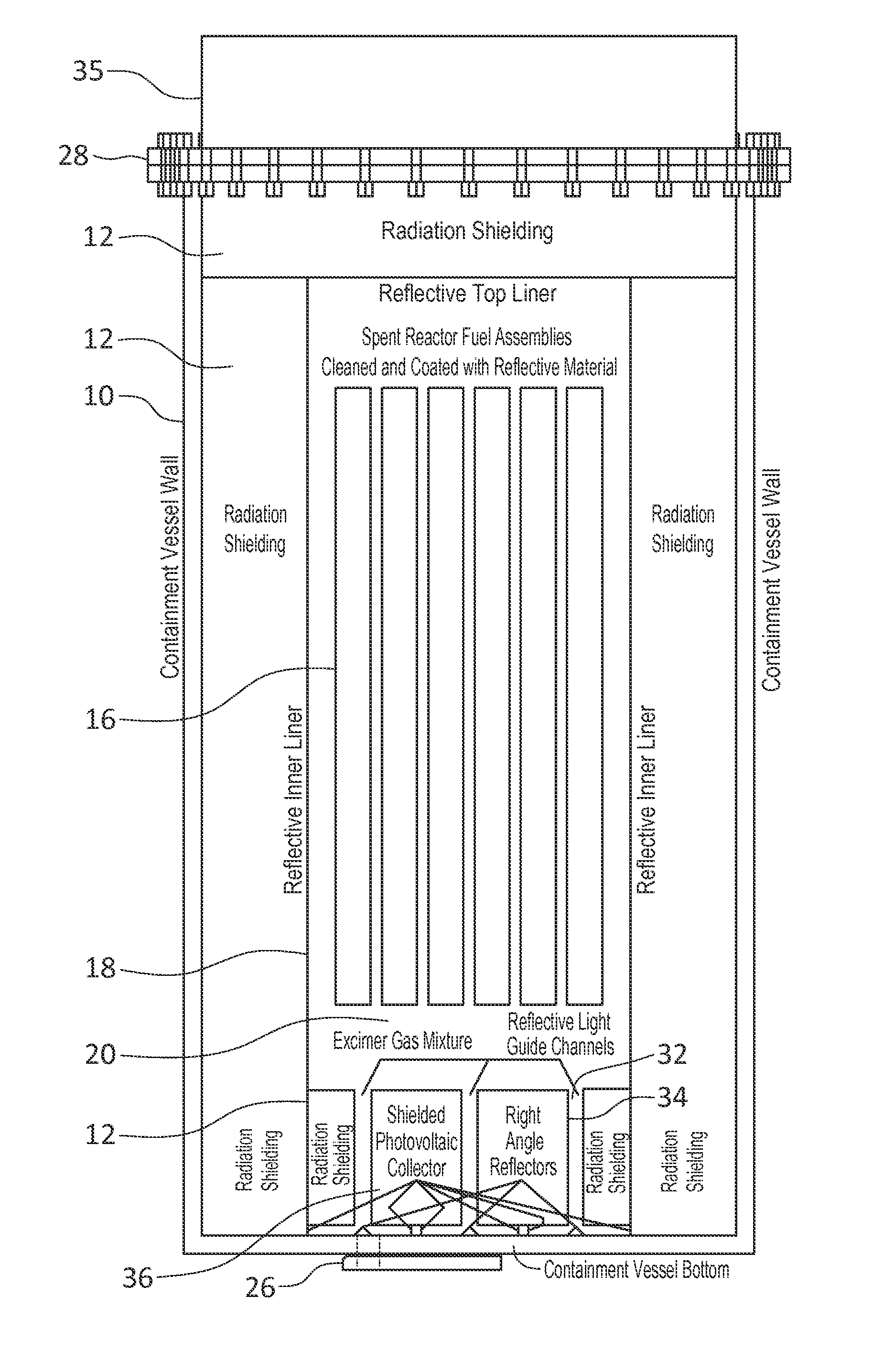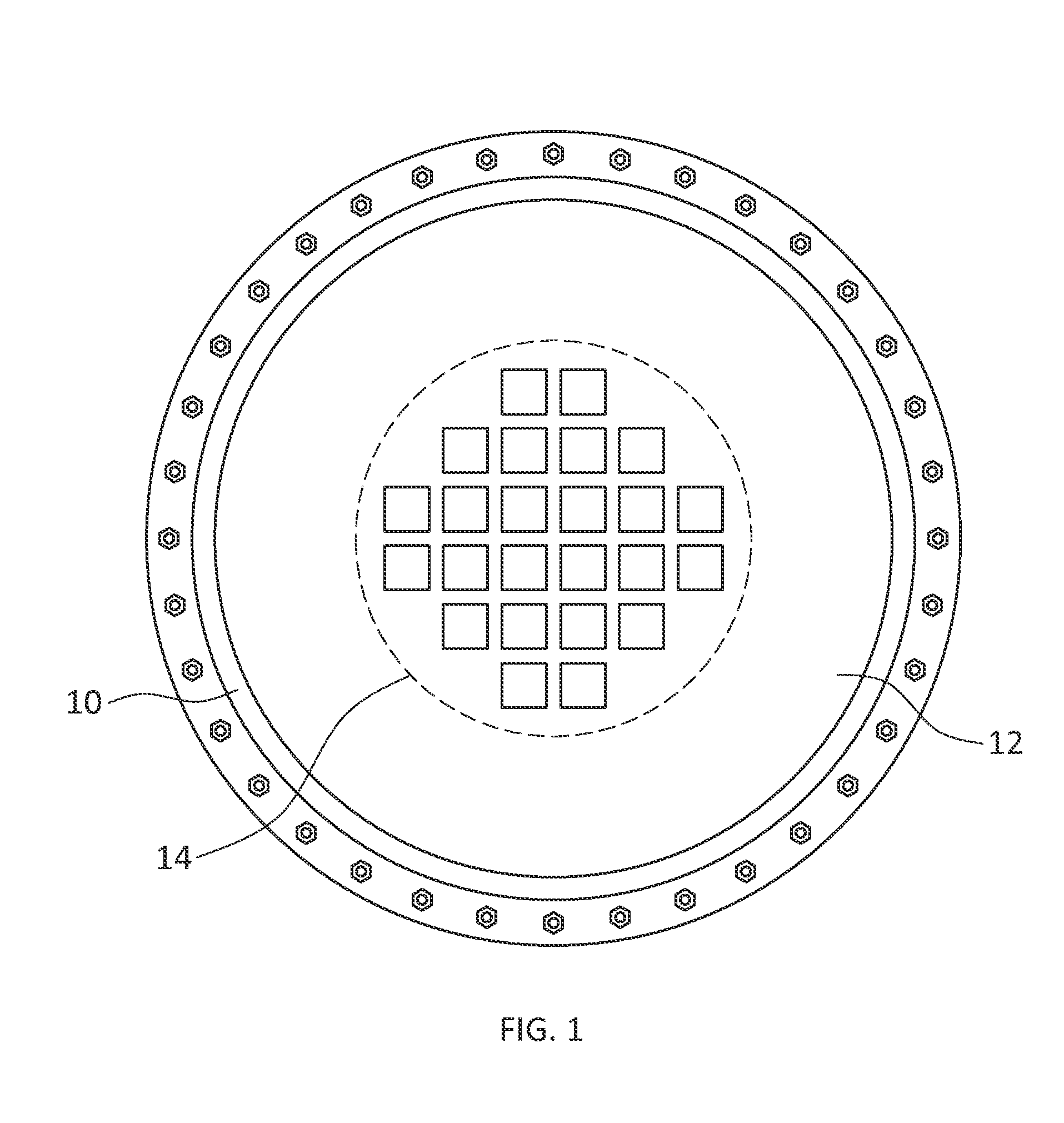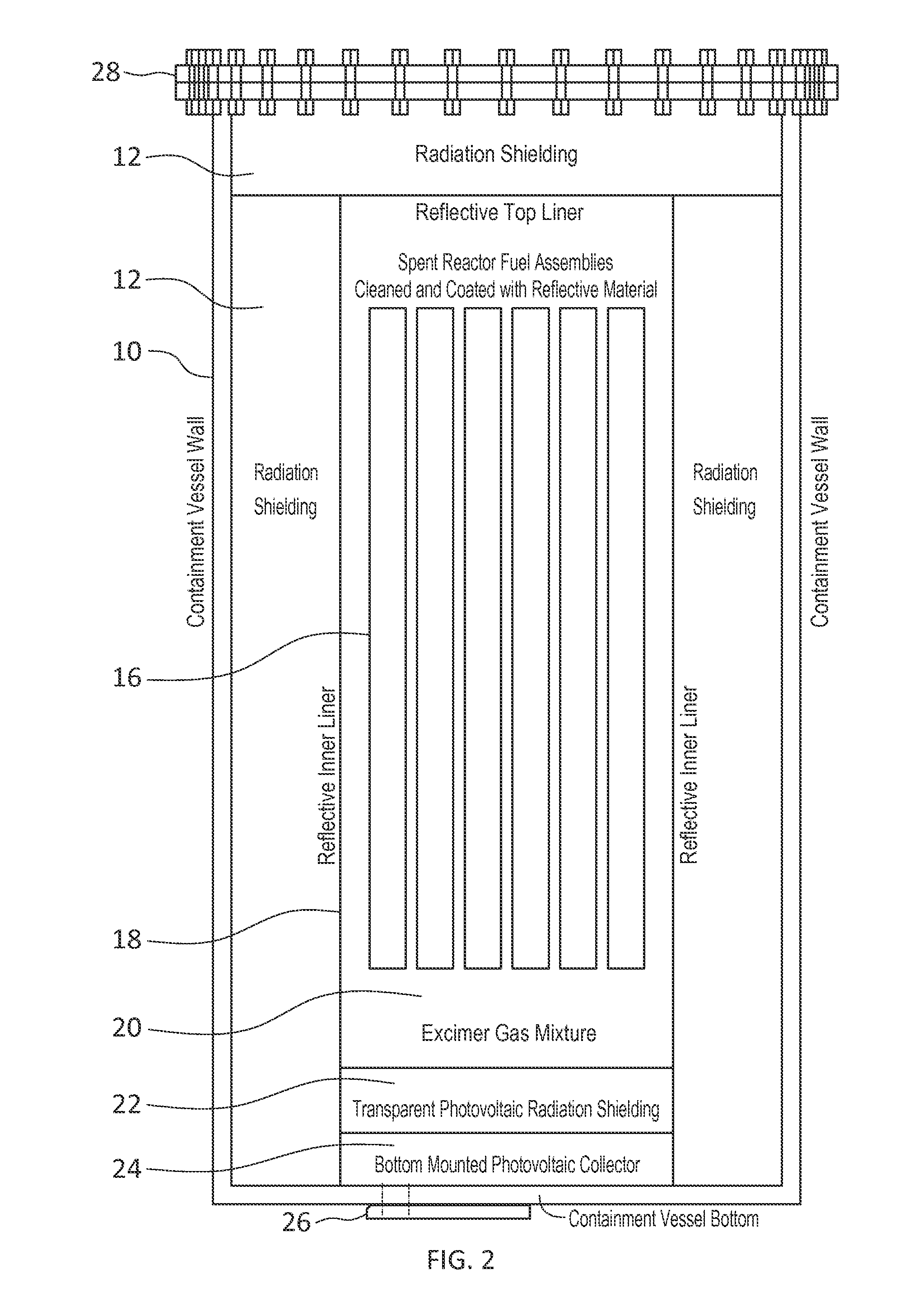Isotope energy conversion and spent nuclear fuel storage systems
a technology of nuclear fuel storage and isotope energy conversion, which is applied in the direction of chemical to radiation conversion, nuclear engineering, radiation applications, etc., can solve the problems of unable to actually appropriate the funds to implement geological disposal, the threat of spent nuclear reactor fuel storage, and the huge problem of power companies wasting nuclear reactor fuel
- Summary
- Abstract
- Description
- Claims
- Application Information
AI Technical Summary
Benefits of technology
Problems solved by technology
Method used
Image
Examples
Embodiment Construction
[0019]Preferred embodiments of the invention provides methods, devices and systems for fission produce energy conversion. In energy conversion methods, devices and systems of the invention, a photovoltaic cell generates electricity from isotopes. In some embodiments, a two step conversion is used, with an excimer fluorsecer first producing photons that are then converted to electricity by a photovoltaic cell. In other embodiments the energy conversion is via a p-n junction of a wide bandgap material including a radiation shield with a high density rare gas radioactive isotope micro bubble. The high density causes excimer states in the rare gas radioactive isotope that decay to produce photons, and the photos stimulate the p-n junction to produce electrical current.
[0020]In preferred embodiments, photons are generated by exposing an excimer flourescer to radiation. The excimer flourescer converts the energy of the radiation from the radioactive decays into UV or visible photons. Pref...
PUM
 Login to View More
Login to View More Abstract
Description
Claims
Application Information
 Login to View More
Login to View More - R&D
- Intellectual Property
- Life Sciences
- Materials
- Tech Scout
- Unparalleled Data Quality
- Higher Quality Content
- 60% Fewer Hallucinations
Browse by: Latest US Patents, China's latest patents, Technical Efficacy Thesaurus, Application Domain, Technology Topic, Popular Technical Reports.
© 2025 PatSnap. All rights reserved.Legal|Privacy policy|Modern Slavery Act Transparency Statement|Sitemap|About US| Contact US: help@patsnap.com



